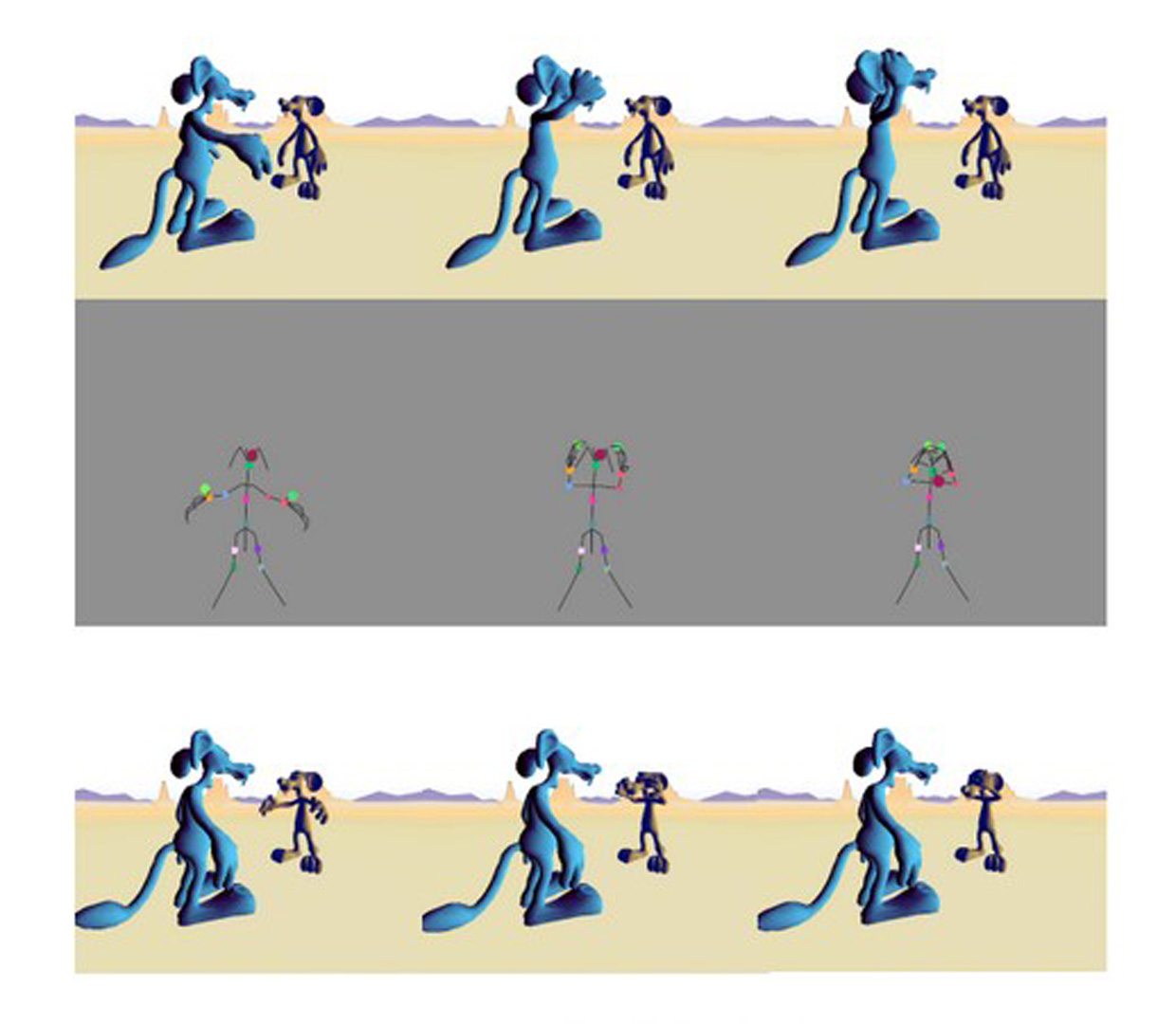“Imitation and Social Intelligence for Synthetic Characters”
Conference:
Title:
- Imitation and Social Intelligence for Synthetic Characters
Session/Category Title: Monkeying With Reality
Presenter(s)/Author(s):
Abstract:
An increasing amount of evidence suggests that in human infants the ability to learn by watching others, and in particular, the ability to imitate, could be crucial precursors to the development of appropriate social behavior, and ultimately the ability to reason about the thoughts, intents, beliefs, and desires of others [Meltzoff 1996].
We have created a number of imitative characters and robots [Breazeal et al. 2004], the latest of which is Max T. Mouse, an anthropomorphic animated mouse character who is able to observe the actions he sees his friend Morris Mouse performing, and compare them to the actions he knows how to perform himself. This matching process allows Max to accurately imitate Morris’s gestures and actions, even when provided with limited synthetic visual input. Furthermore, by using his own perception, motor, and action systems as models for the behavioral and perceptual capabilities of others (a process known as Simulation Theory in the cognitive literature), Max can begin to identify simple goals and motivations for Morris’s behavior, an important step towards developing characters with a full theory of mind.
References:
Blumberg, B., Downie, M., Ivanov, Y., Berlin, M., Johnson, M. P., and Tomlinson, B., 2002. Integrated Learning For Synthetic Characters. ACM Transactions on Graphics, 21, 3, 417–426.
Breazeal, C., Buchsbaum, D., Gray, J., Gatenby, D., and Blumberg, B., 2004. Learning From and About Others: Towards Using Imitation to Bootstrap the Social Understanding of Robots. Artificial Life, Forthcoming.
Meltzoff, A., 1996. The Human Infant as Imitative Generalist. In Galef, B. G. & Heyes, C. M. (Eds.), Social Learning in Animals: The Roots of Culture. (pp.347–370). New York: Academic Press.





